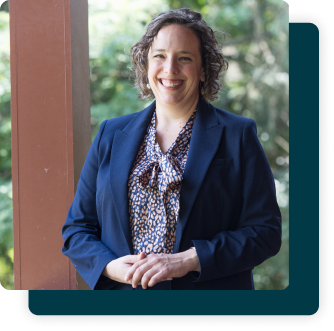October Event: Lauren Whitnah

Listening with St. Benedict
WHEN: October 3, 2024
WHERE: Jenks - Gregory Auditorium
TIME: Reception at 4 p.m., Lecture at 4:30 p.m.
Free and open to the public
About the lecture
For a millennium and a half, Christians have locked to the Rule of St Benedict for wisdom about how they might live communally. Far beyond simply establishing the quotidian requirements for monastic life, the Rule carefully articulates core principles for flourishing together. It offers a framework within which we might imagine contructive ways of engaging with each other through our differences. This talk will consider the Rule in its own early medieval context, briefly discuss how it has been read and deployed since its compilation, and end with some suggestions for what it might offer us in a modern non-monastic context.
About our speaker
Dr. Lauren Whitnah has served as Dean of Nashotah House since August 2024. A medieval historian, Whitnah previously served on the teaching faculty of the University of Tennessee, Knoxville and as research manager and associate director of the university's Global Computing Lab.
Whitnah holds a PhD in Medieval Studies and Master of Medieval Studies, both from the University of Notre Dame; a Master of Studies in History from the University of Oxford; and a Bachelor of Arts in History from Gordon College.
As senior lecturer at UT, she taught more than 400 students annually in interdisciplinary classes exploring the history, politics, culture, art, religion, economics, and literature of Western Europe from ca. 300 to ca.1500. During the decade she taught Medieval and Renaissance studies at the university, the number of students pursuing majors and minors in that discipline tripled. Whitnah also served on the university's Faculty Senate and as co-chair of the Faculty Senate Teaching and Learning Committee.
Whitnah has received numerous awards as an educator, including the Chancellor's Award for Excellence in Teaching at UT and the Award for Teaching Excellence from the Southeastern Medieval Association.
Whitnah's academic focus centers on devotion to saints and understandings of sacred place in the High Middle Ages, particularly in northern England and southern Scotland. She has published and presented on topics including liturgical developments in veneration in the twelfth century, Aelred of Rievaulx and the saints of Hexham, and women at the shrine of St Cuthbert in Durham. She has taught at Episcopal and Anglican churches on a wide range of topics, including Benedictine monasticism, the life and work of Hildegard of Bingen, and medieval devotional art.

 CFI Events
CFI Events October Event: Lauren Whitnah
October Event: Lauren Whitnah


